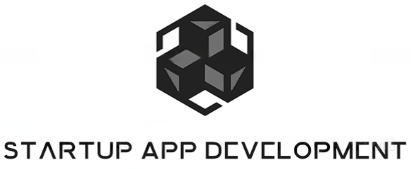In the fast-paced world of app development, staying ahead of the curve is crucial for success. With millions of apps in the market, how can your app stand out? In this guide, we’ll explore the strategies successful apps use to maintain their competitive edge.
Understanding Market Trends
Successful apps pay close attention to the latest market trends. By keeping an eye on what users are gravitating towards, apps can align themselves with user needs more effectively. Engaging in competitive analysis not only provides a snapshot of industry movements but also helps pinpoint gaps and opportunities within the market. This proactive approach enables developers to fine-tune their app offerings, ensuring they stay relevant and appealing to the target audience.
Market trends often dictate the progression of app features and design preferences. Successful apps usually adopt a forward-thinking mindset, focusing on both current and future trends. This agile approach not only helps in maintaining a competitive advantage but also in creating anticipatory strategies that keep their app at the forefront of innovation.
Prioritizing User Experience
A seamless user experience is critical. Apps that prioritize intuitive design and smooth functionality keep users engaged and satisfied. It’s a simple principle—when users have a positive experience, they’re more likely to continue using the app and recommend it to others. This focus on user-centered design reflects directly on user retention and contributes to a successful app lifecycle.
One key aspect of enhancing user experience is to ensure that apps are optimized for quick loading times and feature-rich interactions without lag. This can be achieved through thorough testing and regular optimization. Users appreciate an app that respects their time by providing fast, frictionless navigation.
Another element is personalization, where apps tailor the experience according to the user’s preferences. By leveraging various user data aspects, developers can offer personalized content and recommendations, resulting in a more engaging and relevant app experience.
Frequent Updates and Innovations
Regular updates and introducing new features are key strategies for maintaining user interest. It’s important to innovate continuously to offer something fresh. An app that frequently rolls out updates shows that developers are committed to improving their product and responding to feedback, which is a major factor in sustaining a competitive edge.
Innovation doesn’t always mean adding new features; sometimes, it’s about refining existing ones or enhancing the app’s core functionalities. By listening to user feedback and monitoring app performance, developers can determine which areas of the app need improvements.
Keeping up with technological advancements is also crucial. For instance, integrating new technologies like AR, AI, or machine learning can elevate an app’s functionality, setting it apart from competitors. By being pioneers in tech adoption, successful apps can create unique user experiences that entice users.
Leveraging Data and Feedback
Data analytics can provide valuable insights into user behavior. Collecting and implementing user feedback ensures the app evolves to meet user expectations. Understanding user patterns through data allows developers to make informed decisions, helping optimize app performance and functionality.
Feedback loops are important to encourage user interaction. Whether it’s through surveys, in-app feedback options, or social media interactions, obtaining honest user opinions can greatly enhance the app’s development path. By responding to critiques and suggestions, apps can fine-tune their services to better serve their audience.
The value of data in today’s app landscape cannot be overstated. Using advanced analytics tools, such as App Store Optimization, can guide apps to improve retention, engagement, and usage metrics, ultimately leading to increased success.
Effective Marketing Strategies
A strong marketing strategy can enhance visibility and attract more users. Utilizing social media, SEO, and collaborations can amplify app reach. In a saturated app market, standing out requires a keen focus on marketing initiatives that engage potential users where they spend their time.
Social media continues to be a powerful tool for user acquisition and engagement. Using platforms like Instagram, Twitter, and LinkedIn, developers can create buzz around their app effortlessly. Whether through organic reach or targeted ads, social platforms offer diverse avenues to reach potential users.
Another potent strategy is influencer partnerships. Collaborating with respected figures in your app’s niche can provide authenticity and broaden user access. These partnerships often bring a trusted voice to your marketing efforts, making your app more appealing to new users.
Building a Community
Engaging with users through forums, social media, and in-app communities fosters loyalty and helps build a devoted user base. Communities surrounding an app provide a platform for users to share experiences, ask questions, and support one another, creating a sense of belonging.
Successful apps often leverage these communities to gain insights into user preferences and future expectations. By being active in community spaces, developers can stay aware of user sentiments and adjust the app according to community feedback.
A thriving community not only supports users but also acts as a touchpoint for ongoing engagement. Regular interaction with users cultivates loyalty, creating advocates for your app who will not only continue using it but also recommend it to others.
Staying Ahead in the App Game
By following these strategies, your app can not only establish a strong market presence but also sustain it in the face of competition. It’s all about understanding your audience, staying agile with updates, and utilizing data-driven decisions.


